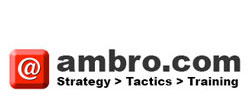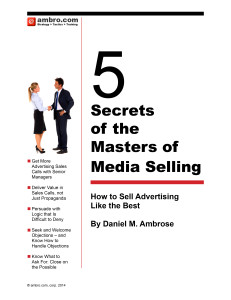News recently broke that Kantar, the media research company, is being shopped around with a billion-dollar-plus price tag. Media research is valuable. But too many media companies don’t get their money’s worth out of the their subscriptions to MRI or Neilsen or ComScore or name-the-syndicated-research for your medium.
Most ad-sales executives, and the marketing people who develop ad-sales presentations, use the research numbers to show how their media reaches this or that kind of reader or viewer, or how their media is bigger or better than the competition.

Are your sales calls like a bad blind date?
Think of a sales call like a blind date. If you talk about yourself too much, you are a bad blind date. If you show interest in your date, you might get another. If you start off by telling your date something that you know about them, and that you’d like to know more about, you’ll be directing the conversation, AND giving them a chance to talk.
The right way to use research is to engage your prospective customer with information you know about THEIR customers. Who are they? What do they want? What triggers their interest? How to they travel the path-to-purchase?
Many sales people will hesitate about this approach, fearing to “try to tell” their customer something they already know. To be sure, I don’t recommend presenting a pedantic litany of obvious information. I do recommend being able to say: “To quickly make sure I understand your situation, here is what I learned…please let me know what I missed.” Delivering that information allows you to quickly establish rapport and ask for feedback. Even better, you may be able to present a nugget of information about your prospect’s situation that will help you establish assumptions that will lead logically to the sale.
Syndicated research has a wealth of information; demographics, psychographics, and product purchase and intent information, in mind-numbing detail about your readers or viewers. Never forget that same level of detail is available on the purchasers of any product or service in the questionnaire from toilet paper to travel. Better yet, you can review, for many whole product categories, and not just a profile of buyers, but of heavy buyers, or of intenders, or even compare the profile of your prospect’s brand vs. a competitor brand, observing how they are different, and what opportunities that may suggest.
Your customers’ market characteristics, that I’m writing about here, are what the advertising agency, or media agency, should be talking about with their clients. The more value – insight – you can add to the conversation, the better. More importantly, by bringing the right market perspective, you’ll set up your prospects to see their situation in a light that will also shine on you and your media.
There are many ways to define your prospects “needs,” not just one. Of course, they want more sales, but what is the best way to accomplish that? If an ad-agency wants to make television commercials, they’ll define their client’s need as “more awareness.” But maybe they could get better results from reminding their customers to come back more often. Or to buy more on each visit. Here are two examples of how asking questions about needs can lead to a big sale.
When you go on a blind date, you don’t have to tell your date everything you know about them. But if you start out by saying you noticed they like to ski, and ask them when they learned, or you heard they like a particular musician, you might start off a bonding conversation that would lead somewhere. Apply the same thinking to using research to sell.

